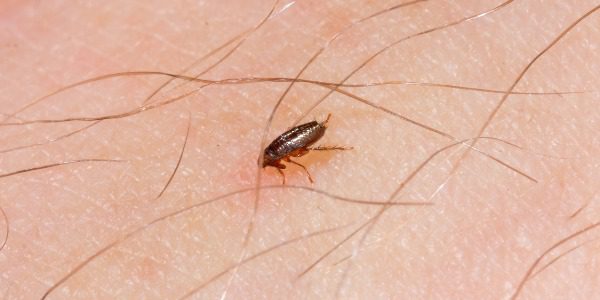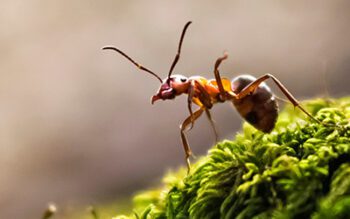
Fleas, these tiny creatures, pose a significant challenge. They commonly infest your beloved furry companions, and their remarkable jumping ability allows them to invade your warm and comfortable home, making it their next meal and residence. For pet owners, fleas become a constant annoyance. Once they target humans, they cause itchy and sometimes infected bloody rashes.
Small and annoying as they are, there is a mountain of fascinating facts about nature’s minuscule hitchhikers. Keep reading for ten fun flea facts from your local flea exterminators in the Long Island metro area, Suburban Exterminating.
If you are looking for comprehensive insights into the size, habitats, and additional details about fleas, delve into our dedicated flea pest identification page.
Fleas Are Olympic Worthy Jumpers
Fleas have a remarkable jumping ability, propelled by specialized hind legs that allow them to leap more than 150 times their body length. This extraordinary feat is powered by a complex coordination of muscle contractions and the release of energy stored in a protein called resilin. Fleas use a catapult-like mechanism, flexing their hind legs to launch themselves with remarkable force. This rapid and efficient jumping behavior helps them cover significant distances quickly in search of hosts, contributing to their adaptability and survival in their environment.
Fleas Bit Dinosaurs Too
Fleas boast a history dating back approximately 165 million years, as evidenced by fossils from Mongolia and China. These fossils showcase their coexistence with dinosaurs during the Mesozoic era. Unlike present-day fleas, ancient counterparts lacked the remarkable jumping abilities and specialized hind legs seen today. The fossils indicate that past fleas relied on crawling. Past fleas also vary in size, some were indeed larger than modern fleas, with fossils suggesting sizes that might have exceeded those of today’s counterparts.
Fleas Helped Transmit the Black Death
The plague, or as it is ominously called, the Black Death, killed tens of millions of people during the Middle Ages. London alone lost 20% of its population in just two years due to the plague. You must be wondering what this has to do with the tiny, humble flea. Many rodents and animals were killed as they became infected with the bacteria that caused the plague. These same animals were the meal hosts for the fleas. So, when the infected animals succumbed, the fleas found the next best option, humans. Thus, inadvertently rapidly spreading the infection.
Fleas Lay a Lot of Eggs
In their short lives, fleas can up to 2000 eggs. What begins as just a few fleas on your pets can balloon into a crazy itch party. That’s because one grown-up flea can unload a whopping 50 eggs every single day on your dogs or cats. Think of them like mosquitoes, bed bugs, and other blood-sucking troublemakers—they latch on and don’t like to let go when they find a cozy host.
Fleas Enjoy a Flexible Life Cycle
A flea’s life cycle comprises four stages:
- Egg
- Larva
- Pupa
- Adult
After the adult lays eggs on a host, they fall off into the environment. The eggs hatch into larvae, which create homes in the ground where they feed, molt, and eventually form a cocoon. Under ideal conditions, this cycle takes 21 days, but fleas adapt their life cycle based on temperature. In warmer temperatures, the process accelerates, while in colder temperatures, it slows or halts until conditions improve. Once on a host, fleas can live up to a year, but without one, their survival drops to 8 days to two weeks.
Fleas Can Be Difficult to Get Rid Of
Unlike some other pests, due to fleas’ complex life cycle, getting rid of a flea infestation usually isn’t a one-and-done treatment. Often, multiple visits by a licensed professional are required to completely eradicate a flea problem.
Fleas Poop Blood
Fleas have a strict diet that is exclusively blood. An adult flea can feed as many as 15 times per day. Like every other living creature, fleas have a digestive process that produces waste. With only blood going in, it is natural that only blood comes out. Flea feces are wholly comprised of dried blood residue. This excrement remains on the host, and larvae that have not fallen off and hatch on the host will feed on this waste product.
Fleas Are Blind
Fleas can detect changes in light and dark, but they are incapable of seeing visual images. Flea eyes are known as ocelli and that allows them to sense wavelengths between 300 and 600 nanometers and are most sensitive to green-yellow light. Fleas do not have ears. They can, however, feel vibrations through their use of sensory hairs.
Fleas Are Strong
Saying fleas are merely strong is a gross understatement. It’s speculated that Fleas can pull 160,000 times their weight, which is the equivalent of you pulling 2,679 double-decker buses.
Protect Your Long Island Home from Fleas
While fleas have a fascinating history, the key is to maintain a flea-free environment for your pets and home. Given their rapid reproduction and feeding rates, one flea can multiply into 2000 fleas throughout your house swiftly.
For effective flea control in Suffolk and Nassau Counties, Suburban Exterminating is your ideal choice. We not only provide thorough extermination but also empower you with the knowledge to prevent future outbreaks.
Don’t wait on the inevitable itch, at the first sign of fleas, contact Suburban Exterminating for your free flea inspection! Ask us about our ongoing pest control prevention program.





